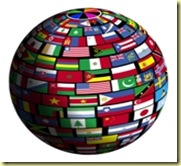On Wednesday I attended a conference on Linking Agriculture, Development and Migration: A Critical Look at NAFTA Past, Present and Future in D.C. It was organized by a host of organization working on trade related issues. The conference was pretty interesting in the sense that almost all the speakers showed some form of discontent with the current NAFTA deal, which was crafted in 1994. The main reasons for discontent was that NAFTA has not been deliver what it was supposed to as per the initial agreement. It was hoped that NAFTA would bring prosperity and increase trade volume in all the three countries but evidences from all the three countries point to the other direction. Almost all the speakers were complaining about job loss, increase in poverty rates, internal and external displacement, destruction of countryside economy, widening inequality, and increasing poverty, among others.

US Congresswoman Marcy Kaptur (D-OH) was very critical of the current NAFTA deal. While arguing that since NAFTA was sealed the US trade deficit has soared to $1 trillion and shift of low-skilled jobs, she also argued that current model of trade agreement is clearly not working. She argued that renegotiation is essential to encompass genuine concerns about agriculture subsidies and cross-border migration. She did not sound protectionist but was arguing in a way to protect American interests, both agricultural and financial. I was wondering why she only mentioned trade deficit and did not talk about capital account surplus contributed by big US financial institutions operating in Mexico.
Meanwhile, Victor Quintana, deputy of the state of Chihuahua, Mexico was more vociferous and critical about the unfair NAFTA deal. He argued that NAFTA has done more harm than good to the Mexican economy. True, on the surface trade volume has increased by manifolds but this does not depict the true picture of the economy. He gave pretty objective and justifiable arguments against the unfair trade deal, which many argue was signed to benefit big corporate business and transnational companies. He was also arguing for renegotiation of the original deal keeping in mind the real dynamics rather than the ideological/theoretical issues forwarded by influential interest groups. His main points were that after NAFTA:
-
Mexico lost food sovereignty; per capita food production was 11% lower than 20 years before
-
There was no integration in real sense because there was no complementary investment (investment flowed from US to Mexico but benefits went back to the US)
-
Trade has benefited a small number of companies and group of people; inequality is rising rapidly
-
80% of the agriculture business is controlled by big transnational companies; indigenous people are stripped off farming
-
Lost two million jobs in the countryside- completely opposite results than what was expected
-
Now 70% of the rural population lives in poverty
The most insightful stuff came from Peter Julian, MP from Canada. He provided a compelling argument for overhauling the current NAFTA deal to accommodate the ground realities facing all the three economies. He revealed that big corporate businesses were gaining in such an astronomical amount that they themselves found it difficult to divulge yearly earnings and profits from the deal since 1994. He said that his team in Canada had to fight for the information on earning earned by a handful of big businesses. It appeared that only big businesses were gaining from the deal. He constantly repeated Saving NAFTA from cheerleaders, which reminded me of Dani Rodrik’s popular paper “How to Save Globalization From Its Cheerleaders.” Also see this one. Some of the effects of NAFTA on the Canadian economy are as below:
-
Decline in permanent jobs; increase in temporary jobs with no pension and health insurance…”non-family instability” in rise
-
Rise in family debt (almost 150% since 1989)
-
Farm income decline by 78%
-
20% of the wealthiest people earn half of all income earnings in Canada
-
Upper middle class has seen status quo in income earning. Meanwhile, middle class has lost one week of income since 1989
-
Lowe middle income group has last 2 weeks of income earning
-
The poorest quintile has lost one and a half month of income earning
-
300,000 Canadians are homeless
The other speaker was a Mexican senator Yeidckol Polevnsky who was even more critical of the NAFTA deal. Since she spoke in Spanish, I had to use a microphone transmitter… it was not cool at all! She argued that since the trade deal, Mexico lost competitiveness (earlier its ranking was 31, now it is 58…source?), increased poverty level (48% before NAFTA, now it is 52%), increased illegal migration from Mexico, and benefits went to big companies only. She seemed to be the ultimate pessimist /nationalist among the speakers. She repeatedly argued that there is no playing field in trade right now and competitiveness is skewed in transnational companies’ favor.
 I was curious and asked a question about what exactly “renegotiation” means and whether the revision, if any to be done in future, would be a step backward from the current deal? Well, Congresswoman Marcy Kaptur went before the session was over, so I did not hear US lawmaker’s perspective firsthand. The MP from Canada directly addressed my question and argued that the rise in inequality, job losses and skewed results in favor of a select few big businesses was a testament of the fact that the deal was already a step backward. He was essentially saying that the deal made countries worse off than they were before the deal. So, he wanted to renegotiate NAFTA to accommodate these genuine concerns and realities and come up with a viable, pragmatic solution. Victor Quintana argued that renegotiation should accommodate protectionist policy space to stop exploitation and ensure that the livelihood of countryside is kept alive by aiding corn, rice, and beans production. The Senator from Mexico offered more gloomy arguments saying that NAFTA has been a disgrace and horrible to Mexican economy as a whole. She was critical of a deal which would allow secondhand vehicles to be sold in the Mexican market, irrespective of quality and safety standards.
I was curious and asked a question about what exactly “renegotiation” means and whether the revision, if any to be done in future, would be a step backward from the current deal? Well, Congresswoman Marcy Kaptur went before the session was over, so I did not hear US lawmaker’s perspective firsthand. The MP from Canada directly addressed my question and argued that the rise in inequality, job losses and skewed results in favor of a select few big businesses was a testament of the fact that the deal was already a step backward. He was essentially saying that the deal made countries worse off than they were before the deal. So, he wanted to renegotiate NAFTA to accommodate these genuine concerns and realities and come up with a viable, pragmatic solution. Victor Quintana argued that renegotiation should accommodate protectionist policy space to stop exploitation and ensure that the livelihood of countryside is kept alive by aiding corn, rice, and beans production. The Senator from Mexico offered more gloomy arguments saying that NAFTA has been a disgrace and horrible to Mexican economy as a whole. She was critical of a deal which would allow secondhand vehicles to be sold in the Mexican market, irrespective of quality and safety standards.
The first session seemed as if the whole session’s purpose was to denounce NAFTA deal. I do share the feeling that NAFTA is not working but we also cannot brand that it is not totally working. But as a whole, it is true that inequality is increasing, select few are gaining astronomically, and the poorest are the hardest hit. A comfortable policy space should be left for domestic policy maneuvering in any future renegotiation. As always: to ensure fairness, we should protect the deals from the cheerleaders!
I will write about interesting stuff that emerged in other sessions when I am not busy. I will try to find some time during my internship tomorrow to write something more about the other sessions.




